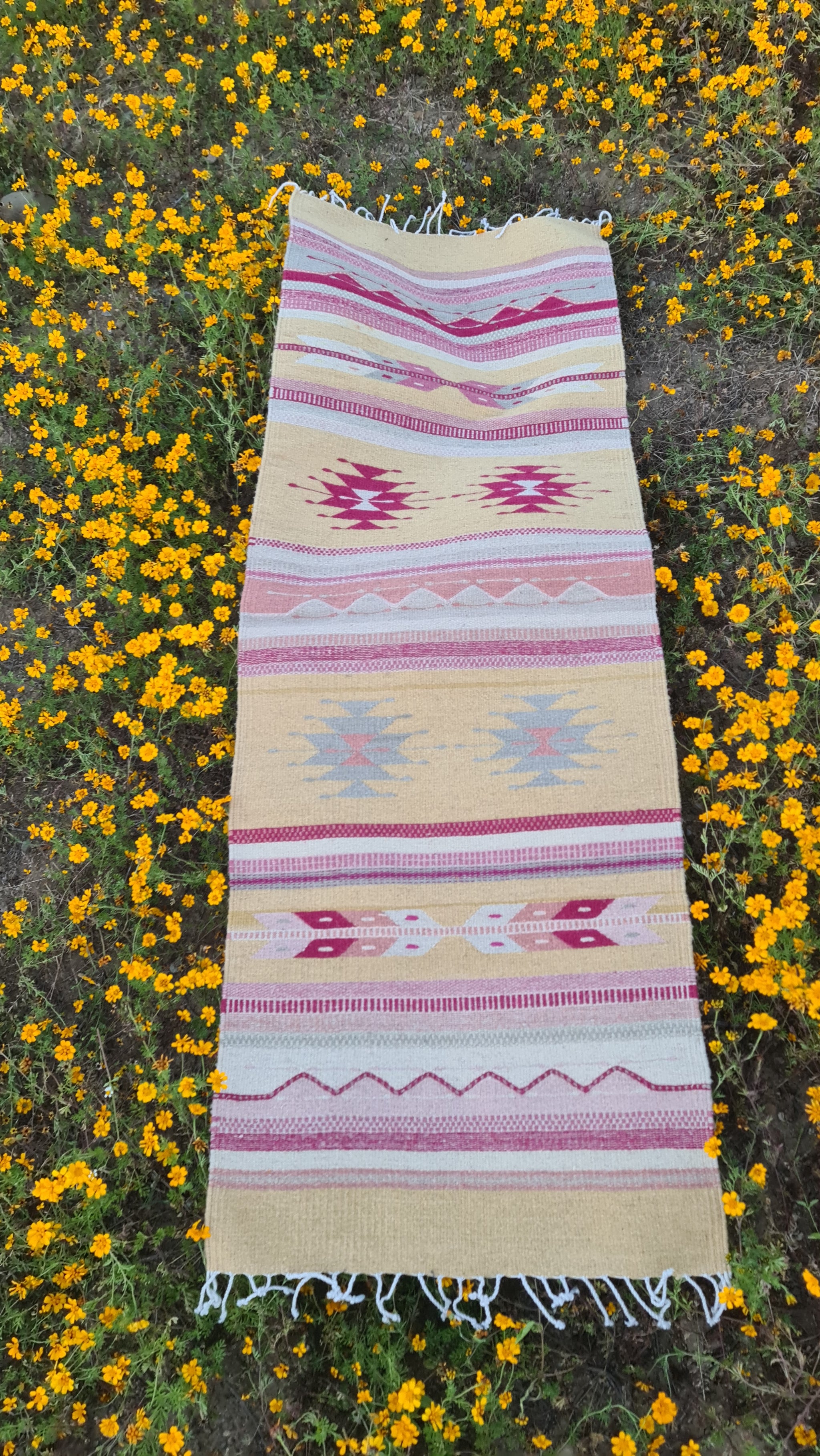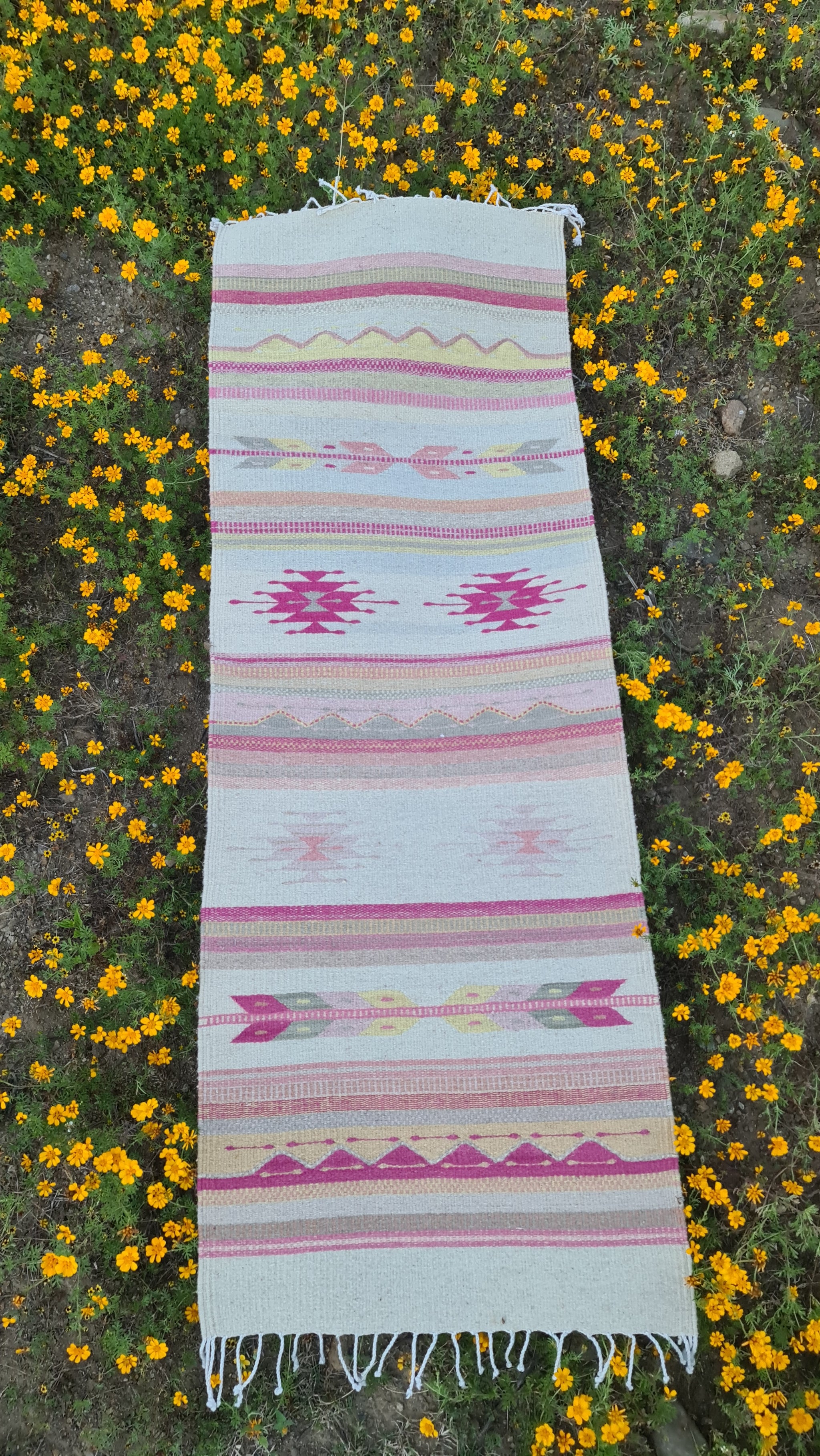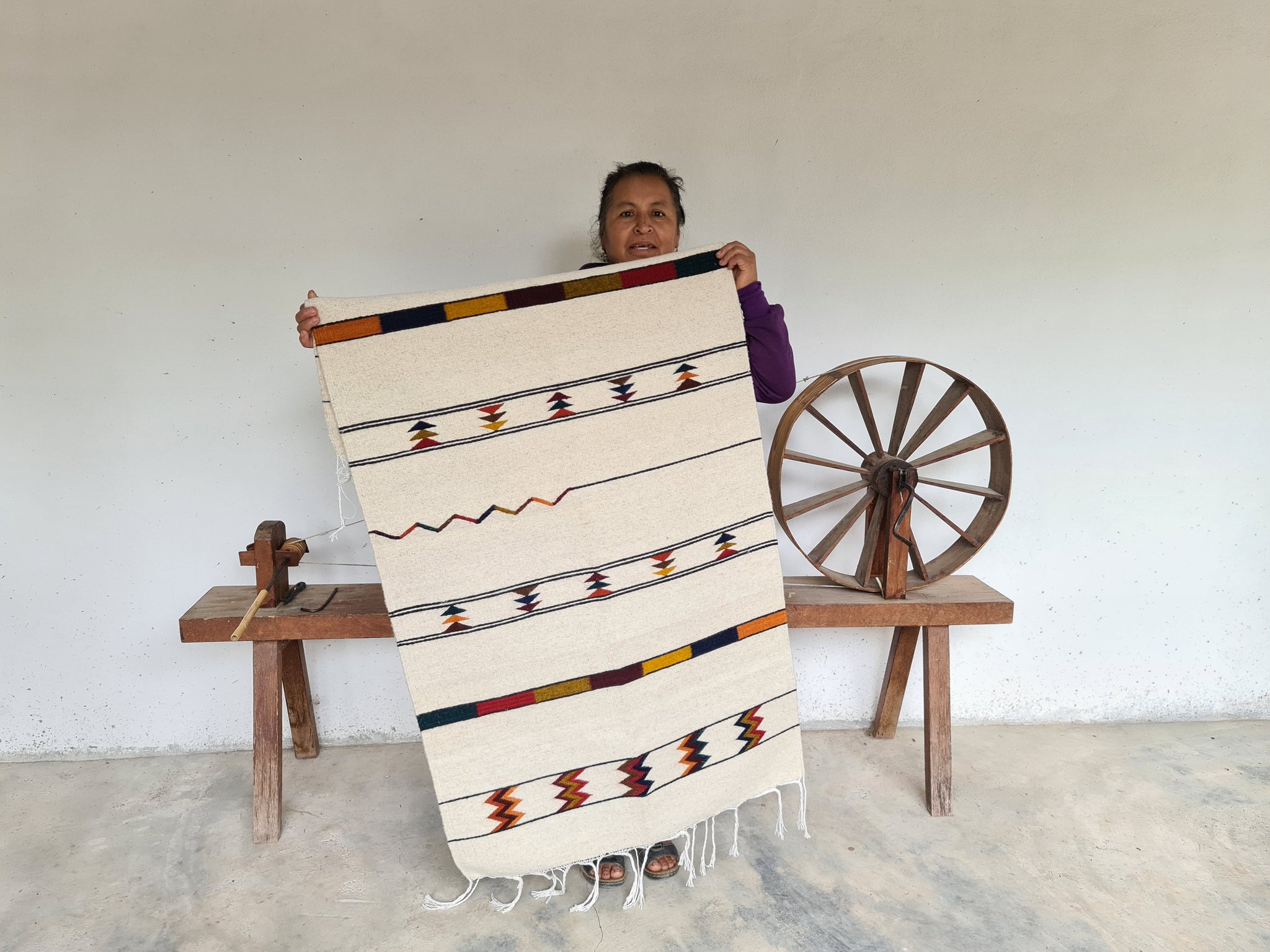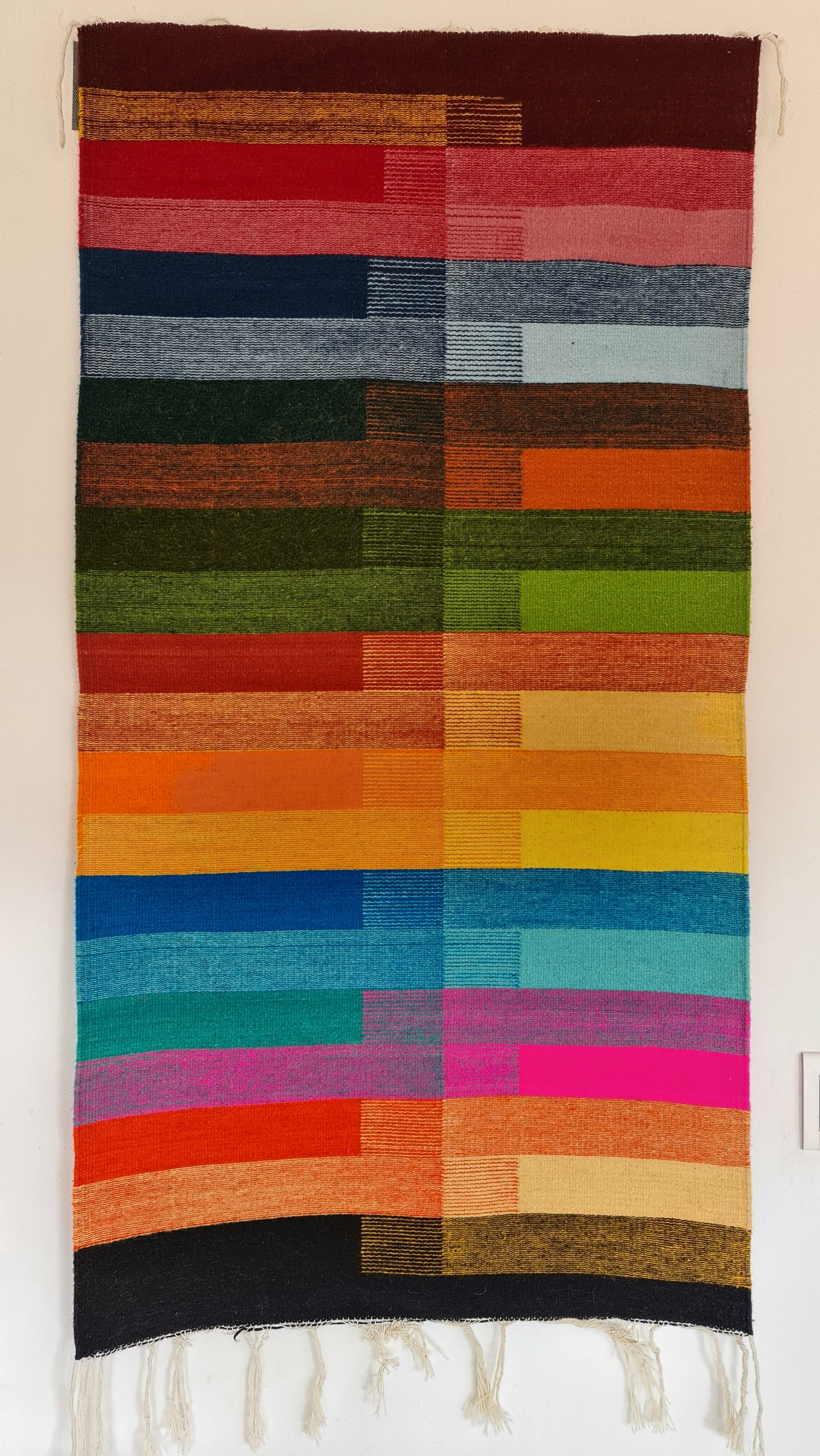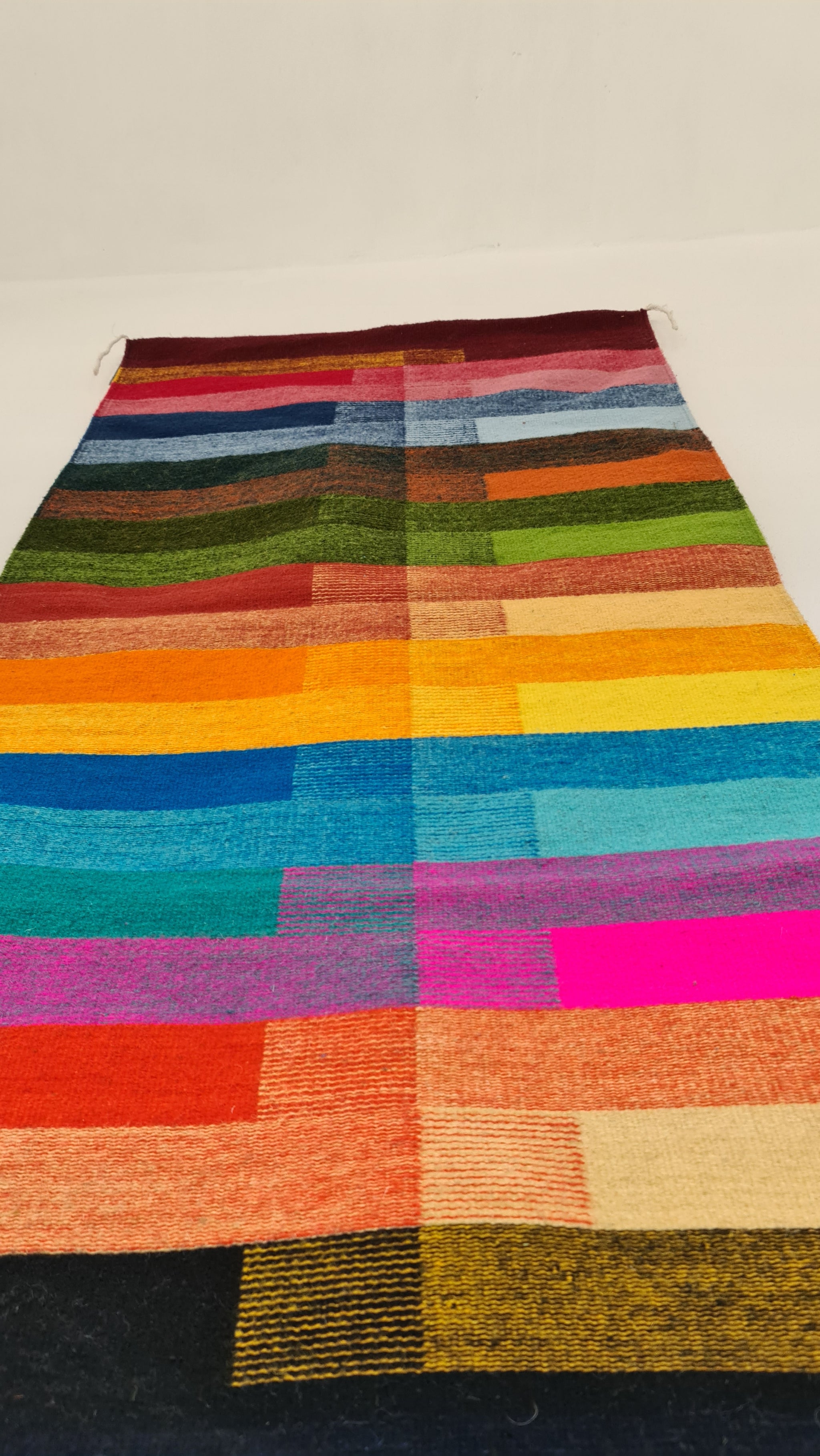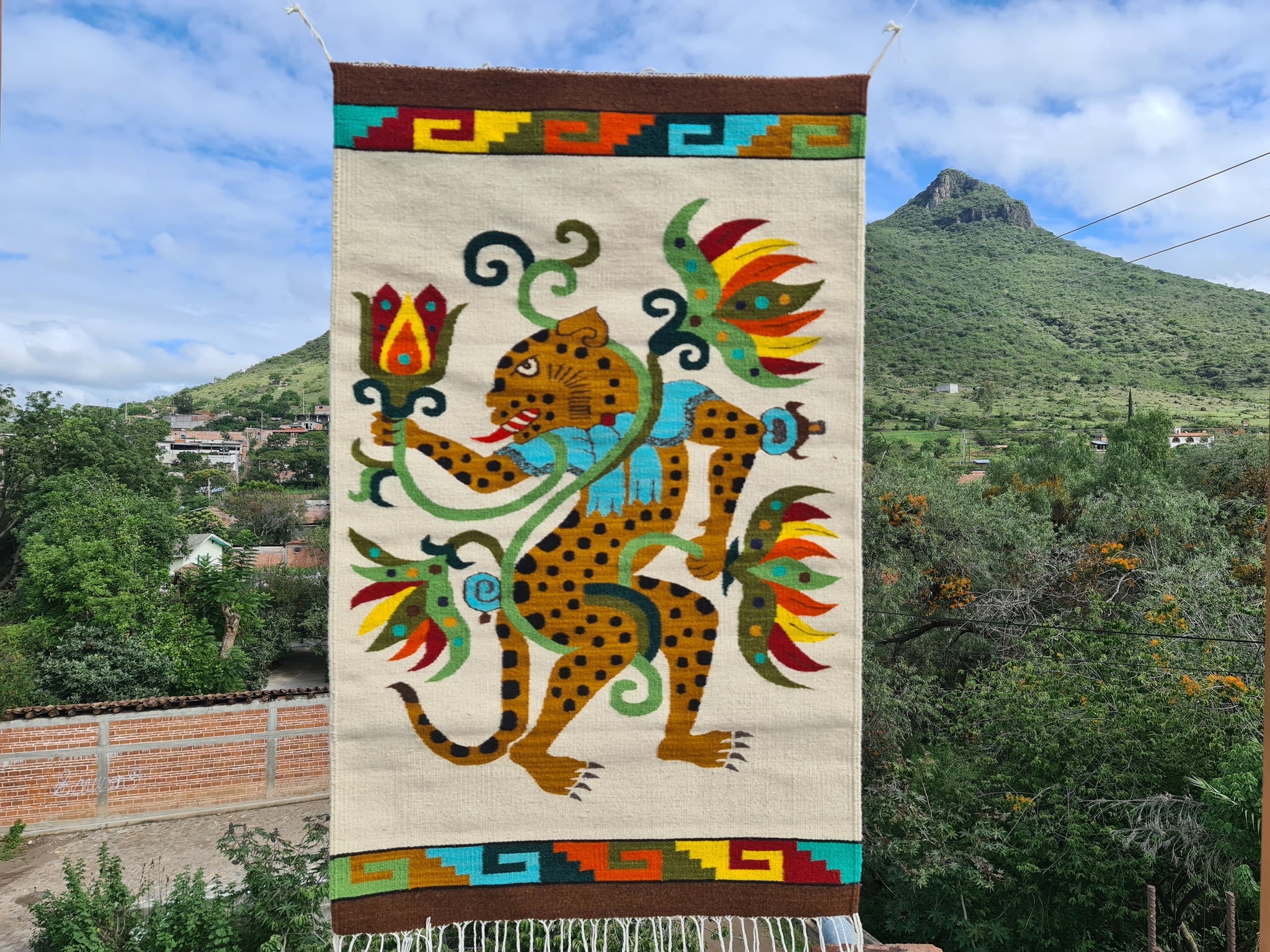Size
Yellow background: 60x164cm; 2x5.3ft
Blue background: 60x172cm; 2x5.6ft
Weaver: Cristina from San Miguel del Valle
Materials and methods: criollo sheep wool hand dyed with natural dyes: Bèé (cochineal), Yauhtli (Tagetes Lucida, a type of wild marigold) and Xiuhquilitl (indigo) . Handwoven on a Zapotec style loom of the 16th century adapted from European styles. Woven using a 7 threads per inch reed and wool rayon blend for warp.
Customize fringes.
Twisted: traditional sturdy zapotec look.
Bundled: casual boho look.
Tucked in: neat look. Good for hanging and easy vacuuming (allow 2-3 days for processing).
Free world wide shipping with MexPost.
You can Upgrade to DHL 3 day shipping after your purchase. Contact us for a quote.
Design, patterns and symbols.
This rug starts with stripes of rivers and smile patterns. When there is a good rainy season the rivers flow with plenty of water well into the dry season, but only if we do our part to maintain the rivers clean and healthy. When my dad grew up they barely used plastic, whatever plastic bag they got they would treasure and reuse many times. In my grandfathers generation they never used plastic and used to meet all their storage needs using clay pots and different types of leaves as siposable wrapping for their food. These days whenn I herd our goats and pass by the streets I have to keep a constant watch on plastic laying around the streets because goats often eath and chew on them, this plastic could get stuck in their guts and cause them problems. Back in the 1970s my parents still remember many streams flowing with clean drinkable water; there were so many little spring holes in the countryside one did not have to carry water to work in the cornfields. These days the story is very different, there is not enough rain to feed the underground rivers and water springs in the countryside, plus the pollution probel. Our ancestors met their nature stewardship responsibilities with a smile and community action. May this two patterns remind us how we can keep our environment clean and let the water flow clean to the oceans.
The mountain patterns in this rug represent the spirit of our ancestors. We call mountains Daiín, sacred elder. In the Central Valleys of Oaxaca the mountains create a microclimate that capture moisture from both the gulf of Mexico and the Pacific; they shiled us from cold fronts and hurricanes and provide a nest for us to build our communities. Our ancestral Benizaa lands go all the way to 3,200 meters above sea level (10,500ft), from the top of the Benito Juárez or Cuajimoloyas' mountains we cann see all the way to the Peak of Orizaba in Veracruz. Our people have spent a lot of time observing the energy flows of nature, from such peaks one could see how the cloud patterns change and make the weather and microclimates of our region. The mountains will teach us how the web of life connects us from the isolated central valleys to the inmensite of the Ocean in the pacific and the gulf coast. Mountains have been guding our walk on earth since the last Ice Age Maximum when we followed their peaks to find safe places to reside leading us to ancient lakes where other animals were fed and nurtured by the earth and the sky. Mountains still have many stories to tell us, let our bodies climb up to them so that our spirit can fly.
We know that laughing and smiling are the basic ingredient for all healing, the first change that needs to happen is a change in attitude. We now know through science how the brain releases a cocktail of happy molecules when we smile. This smile pattern (dentaded stripe) is repeated througout the rug. Above the mountains we have smile patterns and rain stripes.
The fletching symbol represents the path of the warrior philosphy in which our ancestors embrace death as the greatest teacher in life. Observing nature we noticed that the complex network of life is woven with death, it takes someone's death to feed life. But who is hunting us? Humxns could be considered an apex predator but they lack the evolutionary teachings to occupy that place, we got there quite quickly in evolutionary terms, therefore we have to look up to Eagles, Jaguars, Snakes and many other teachers to be able to live up to the role in nature. Death is the great equalizer and brings us down to earth, our lives are as important as that of any other humxn or any other species, during this COVID19 pandemic we have seen how vulnerable we really are and how a tiny virus can wreck havock with our socienty in spite of our technological advancements. Living life aware of our mortal existence makes us humble and gives us respect for life. When we are grounded and face life and death scenarios we can bring the best of ourselves and achieve great feats to save ourselves or those who we love. We all have hear numerous stories of survival that illustrate this mindset, our ancestors had a free, mandatory and public education system in the classica period to educate all kids in these aspects of knowledge known as Toltecayotl (a balanced way of life). This fletching pattern has the seeds of life woven into it because as we have learnt from nature's ecosystems, a healthy death rate is crucial for balancing the resources of the ecosystem. Our ancestors understood the principles of hunting and created very well balanced ecosystems in which they kept herds of deer, wild turkey, quail, rabbits, hares and many other animals, plants, and fungi. They saw themselves as part of this web of life not apart from it as an entity to be managed.
The next set of patterns is the butterfly of wisdom that brings knowledge with light and the moth of wisdom that brings knowledge with darkness. Knowldege is a state of awareness that comes with the butterfly when we are living a balanced life; seeing the world through a balanced view of our Nahual (dreams and intuition), our Tonal (logic and language), our earhtly and spiritual connection. When we are not balanced the moth will come at night and bring its sacred geometry and teachings to guide us and find our true face and true heart: this is what we call the flowered path, where the spirit flourishes.
Additional notes.
The Village of San Miguel del Valle is a Zapotec village that once was part of the community of Teotitlan del Valle that settled permanently in the Northeastern part of our territories. We maintain strong lineage connections with this village with many families intermarrying, trading and forming social bonds. Unfortunately many rug traders in Teotitlan del Valle don't always give credit to the weavers in San Miguel del Valle. I have explained in other posts that this is mostly due to the romanticizing of our craft because tourists love the idea that they are buying the craft directly from the maker who is also the full time vendor at the market or shop. Instead we offer you a vast network of weavers and communities working together to process about 12 tonnes of wool per month following ancient native networks of production.
